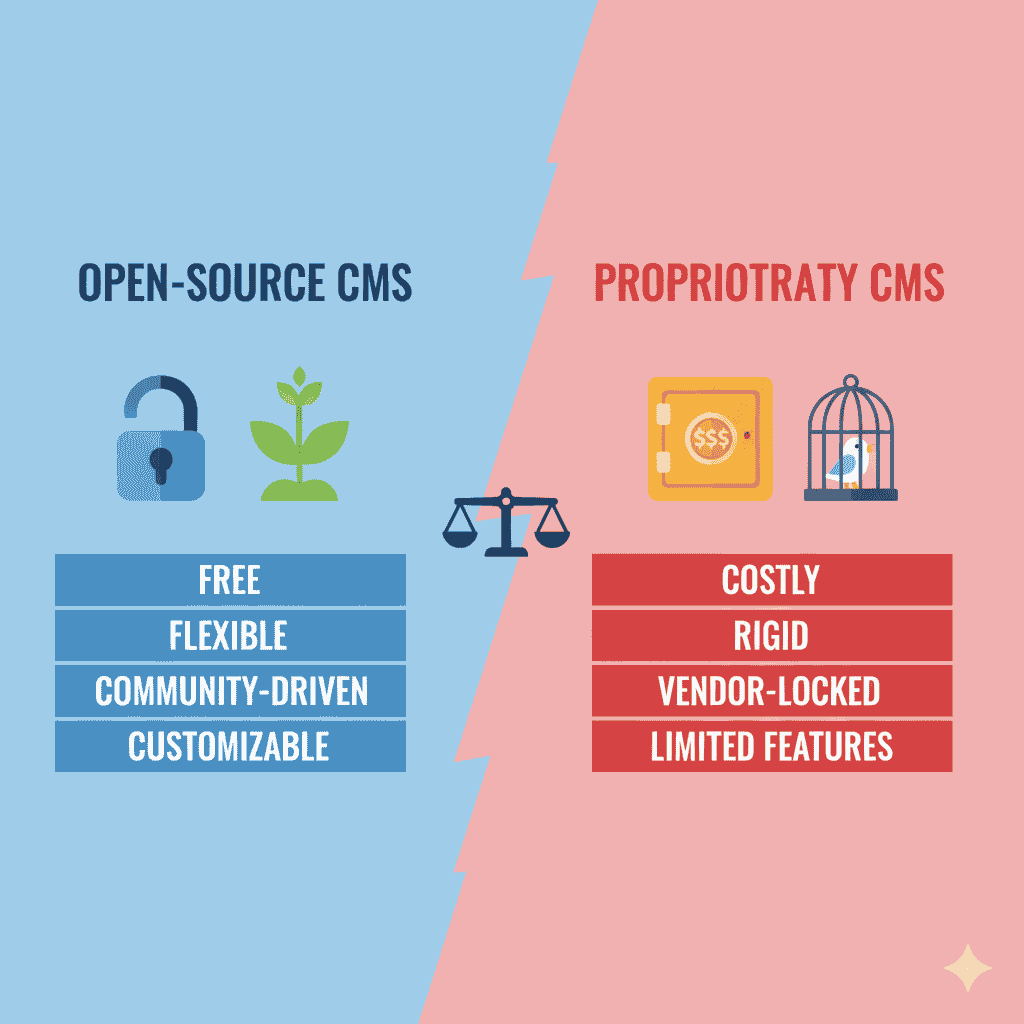When I want to build a website, the first big choice I face is my Content Management System (CMS). This is the tool I use to manage all my content without needing to be a coding wizard.
Basically, it's the difference between building a house from a kit you bought at a store and building a house from scratch with tools and materials you found yourself.

Open-Source CMS: The Free and Flexible Option
Think of an open-source CMS like a public park. The land is free, and a whole community helps maintain it. Anyone can plant new flowers or build a new bench. This is what an open-source CMS is. The software is free, and its code is public. Anyone can use it, change it, and share it.
The most popular one by far is WordPress.org (not to be confused with WordPress.com - see .org vs .com). Other big ones are Joomla and Drupal. See examples of CMS
Pros:
It’s totally free. I don't pay anything for the core software. I only pay for my domain name and hosting.
I have total control. I can change anything I want about my site. I and can change structure using free theme and add features using thousands of free or paid plugins.
For example, if I want to add an online store, I can use a plugin like WooCommerce.
Huge community help. If I get stuck, I can just Google my problem. A massive community of users and developers has likely already solved it.
Cons:
I have to do the work. I am responsible for security and updates. It's like having a garden; if I don't water the plants, they die.
It can be complex. It might take some time to learn how everything works, especially if I'm not very tech-savvy.
Proprietary CMS: The All-in-One Solution
Now, think of a proprietary CMS as a new car. The company built it, they own it, and they've made it super easy to drive.You just pay a fee, and they handle the maintenance for you.
You can change the radio station and the color of the car, but you can't get in there and rebuild the engine.
Examples are Squarespace, Wix, and Shopify.
Pros:
It’s easy to use. These systems are built for people who don't want to mess with code.I can just drag and drop things to build my website.
Dedicated support. If something goes wrong, I can call or email a support team. They’ll help me fix it.
All-in-one package. Hosting, security, and updates are all handled by the company. It's very convenient.
Cons:
I have to pay. I have to pay a monthly or yearly fee to use the service.
Limited customization. I can only use the tools and features the company provides. I can't build a new feature that isn't already offered.
I'm locked in. It's very difficult to move my website to a new platform if I decide I want to switch later.
Final Thoughts
I always recommend thinking about your skills and goals. If you're a beginner who wants a quick, no-fuss website and has some money to spend, a proprietary CMS is probably the best choice.But if you want total freedom, are willing to learn, and want to save money, open-source is the way to go.